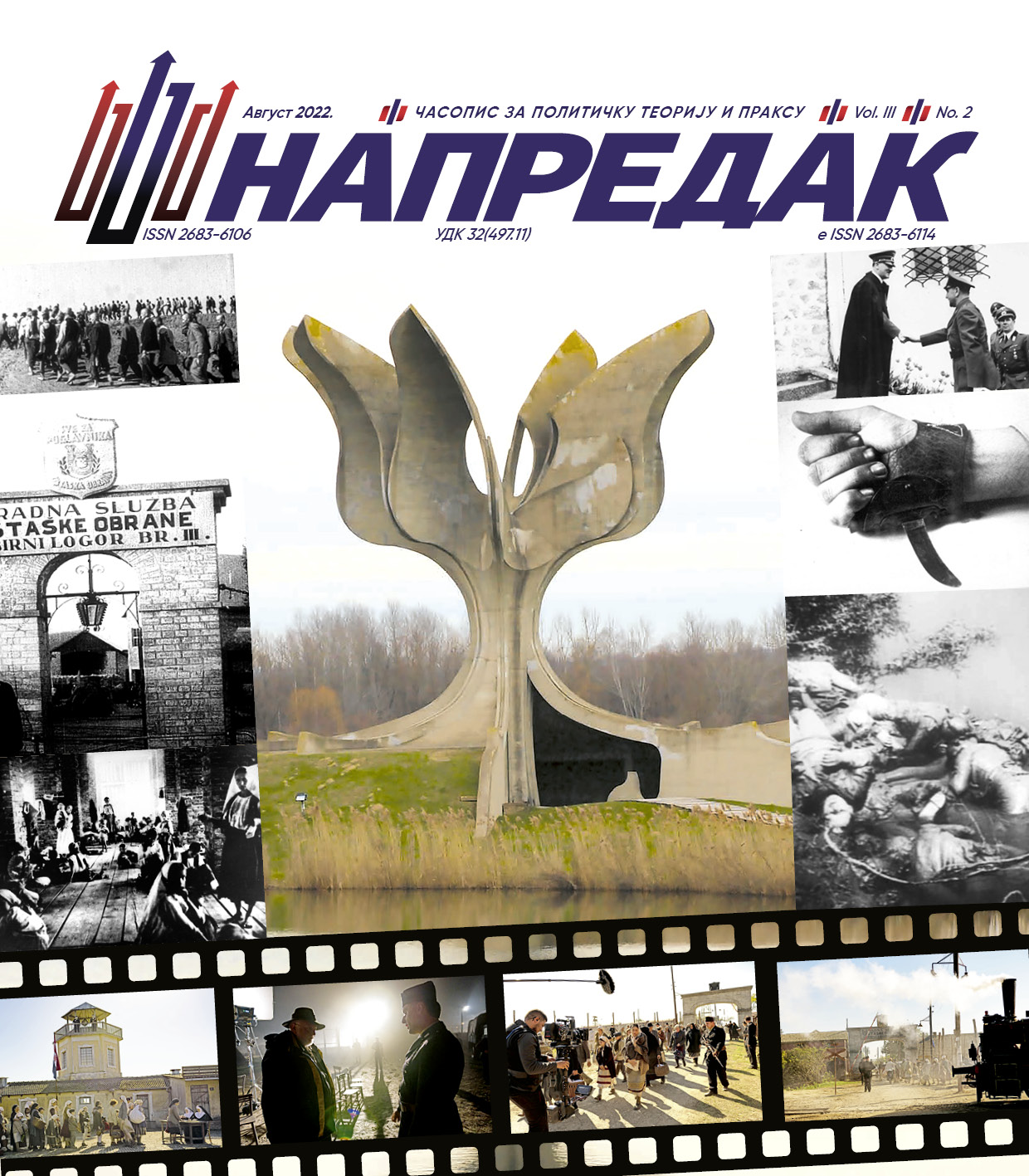Suffering of the Serbian Orthodox Church in the Independent State of Croatia
Abstract
The church is a spiritual institution in which a believing man fulfills his spiritual needs and, accordingly to that, he builds his spiritual being. The church consists of the clergy and the believing people. Without a faithful people there is no Church. And therefore, everything that concerns the Church concerns the faithful people; and vice versa, all that concerns the faithful people, it concerns the Church. In the territory of the clero-fascist Independent State of Croatia (NDH), persecution, terror and killing were burned and the people and the Church. Serbs were killed not only because they were other nations, because of their national being, but also because they have different faiths, because of their spiritual being. They were killed both because they are Serbs and because they are Orthodox. The Ustasha program itself points to this, publicly declared through the words of the leader of the Ustasha state. Genocide Ustasha program in relation to the Serbs - to kill one third, to expel one third, and to one third converted to Catholicism - a clear reference to the planned activities to make Serbs both spiritually and physically kill. If a person's faith is attacked, if it is reckoned with the fact that a person will be induced or forced to renounces his faith in order to accept someone else's, then that is spiritual killing - killing a man as he is was until then. This was precisely the goal of the forced Catholicization of Orthodox Serbs in the NDH. It was done according to the declared Ustasha program. And for the sake of its greatest possible achievement, the Serbian Orthodox Church was particularly under attacк.
References
References / Литература
Čalija, J. (2021, July 29). The Remembrance of Eight Decades from the Slaughter in Glina Church. Politika, p. 7. [In Serbian]
Decree on the Conversion from One Religion to Another (1941, May 5). Narodne novine. [In Serbian]
Janjić, J. (2018). The Light Bearer in the Dark: Holy Confessor Varnava (Nastić). Belgrade: J. Janjić. [In Serbian]
Janjić, J. (2018). Serbian Church in Communism and Post-Communism (1945–2000). Belgrade: Novosti. [In Serbian]
Jevtić, A. (1990). “Great Martyrdom of Jasenovac”. In: In Eternal Memory of Jasenovac – the Place Covered in the Blood of the Innocent 1941/1985/1991: Memorial on the fiftieth Anniversary of the great martyrdom of Jasenovac and the seventh anniversary of the consecration of the rebuilt Church of the Nativity of St. John the Baptist, the memorial temple in Jasenovac (21–22). Beograd: Sveti arhijerejski sinod Srpske pravoslavne crkve. [In Serbian]
Kašić, Lj. D. (1971). Serbian Church in the So-Called Independent State of Croatia. In: Serbian Orthodox Church 1920–1970 (203). Belgrade: Sveti arhijerejski sinod Srpske pravoslavne crkve. [In Serbian]
Novak, V. (1986). Magnum Crimen. Beograd: Nova knjiga. [In Serbian; Croatian]
Perić, D. (1991, May 15). Legalization of Theft. Pravoslavlje, p. 7. [In Serbian]
Prodić, S. (2020). Retrofuturism of the Croatian Orthodox Church. Jagodina: Gambit. [In Serbian]
Serbian Church in World War II – the Report of the Holy Synod (1941-1946) (1991). In: Atanasije, Bishop of Banat (ed.) Serbia and Comments for 1990/91 (97-100; 118-123; 126-127) Beograd: Zadužbina Miloša Crnjanskog. [In Serbian]
Živković, N. (ed) (2007). Serbs in Hermann Neubacher’s Memoirs. Belgrade: Jasen. [In Serbian]

